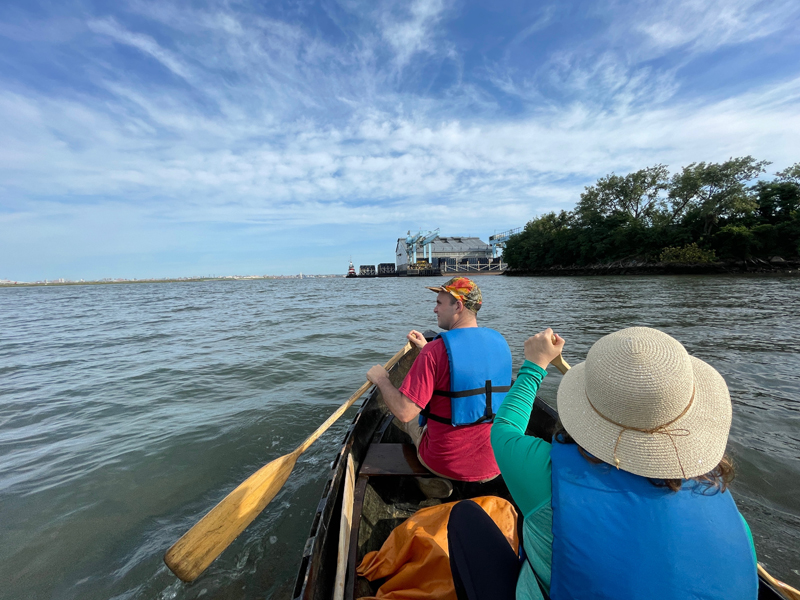
I met Tali Hinkis and Kyle Lapidus at the Flushing Meadows Corona Park Kayak Launch early Sunday morning,

and we set out to explore the bay.
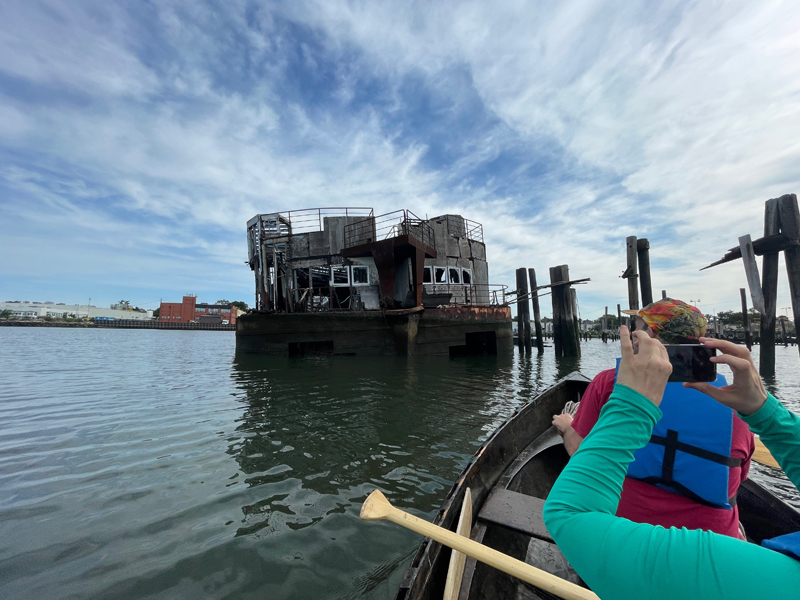
I wanted them to see something that I remember there
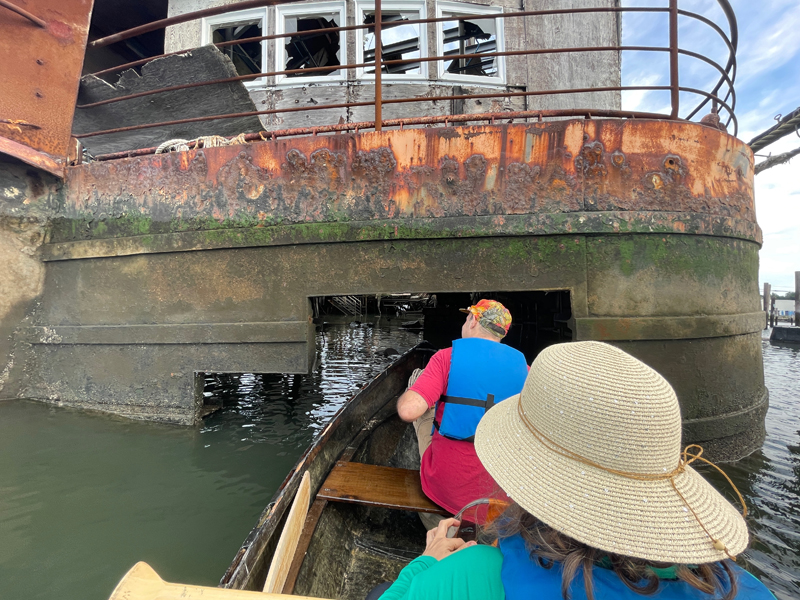
the wreck of a floating nightclub near College Point.
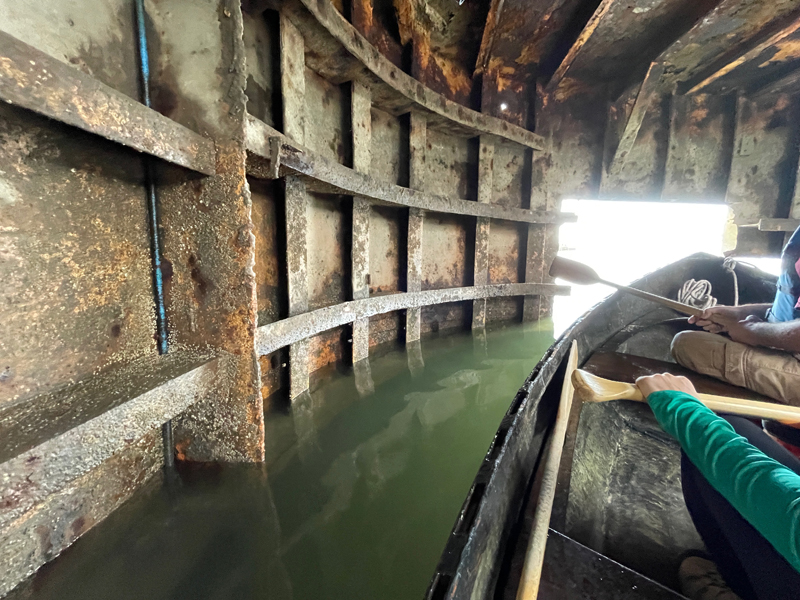
As we floated quietly inside the barge, it reminded me of how I met Tali and Kyle at noise music venues in Greenpoint in the early aughts,
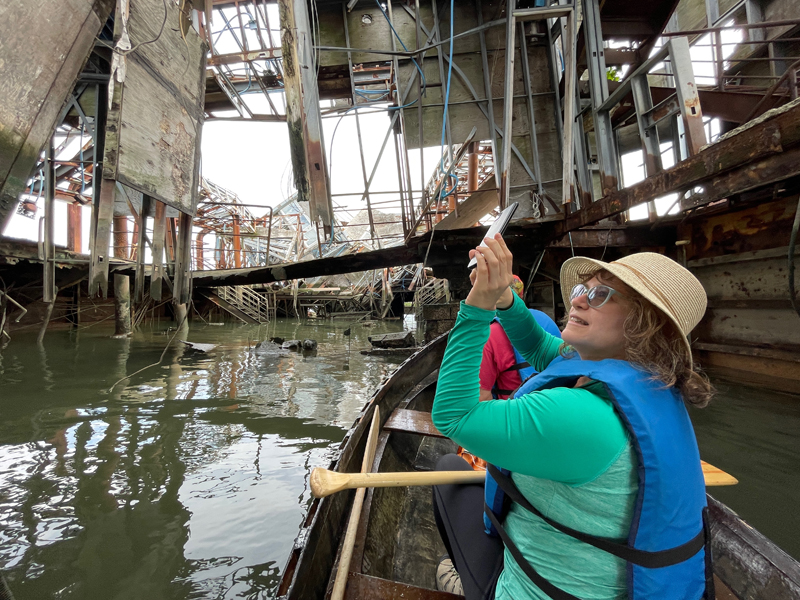
there was something similar about being wrapped in our own perceptions of the environment, almost like being washed over by a massive soundscape.

Of course, this also all makes me uncomfortably aware of the time that has passed.
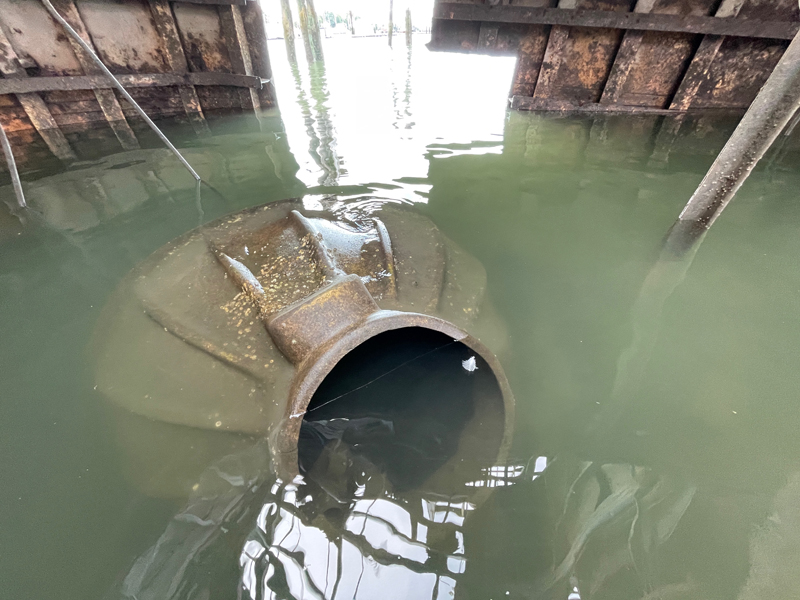
Each time I visit this place, I can see how the boat is sinking deeper into the bay, deeper into the mud, and into its own crumbling sub-structure.
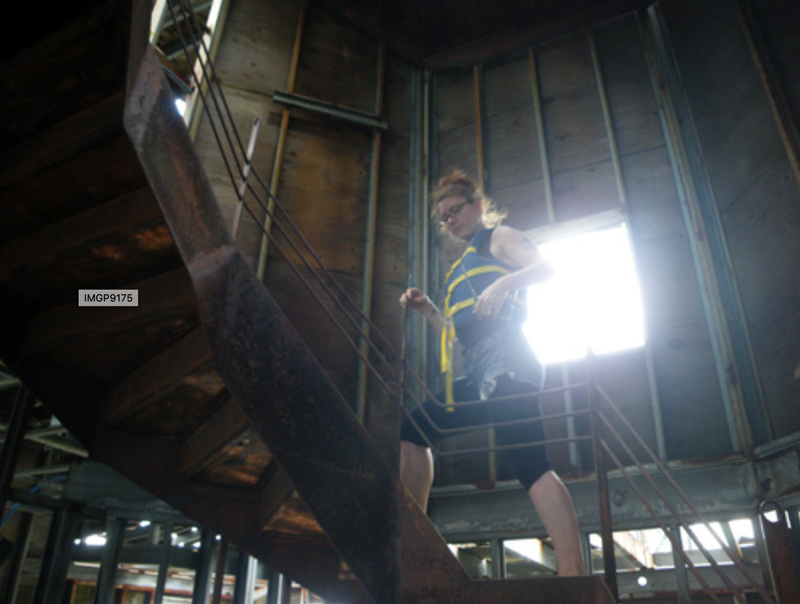
When I came here with Elizabeth Albert and Stayc St.Onge in 2012, we actually walked around on the upper floors,
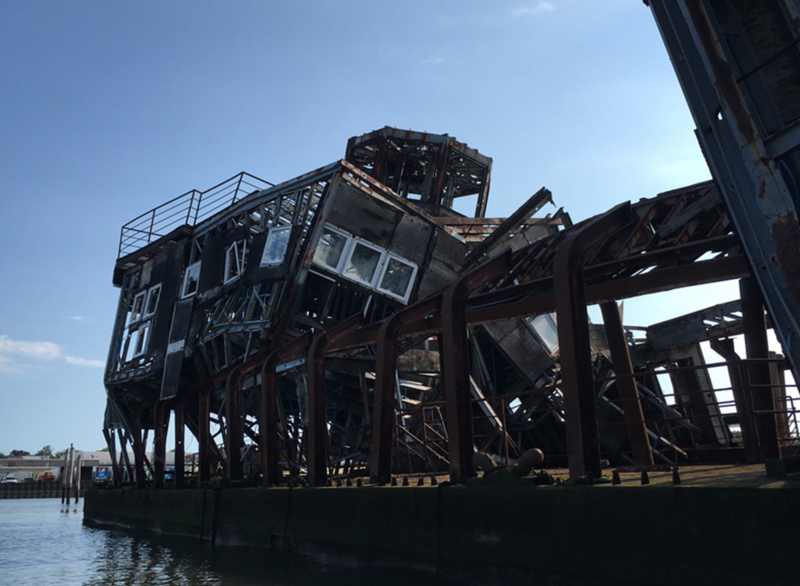
and again with Anne Thompson in 2018, there was still a twinkle of its former function.

I remembered finding something online back then about the entrepreneurial nightclub owner and his dream of a floating venue, but I wonder now if I made it all up for the blog.

Either way, the party will be over in another few years.

We paddle back out into the bay,
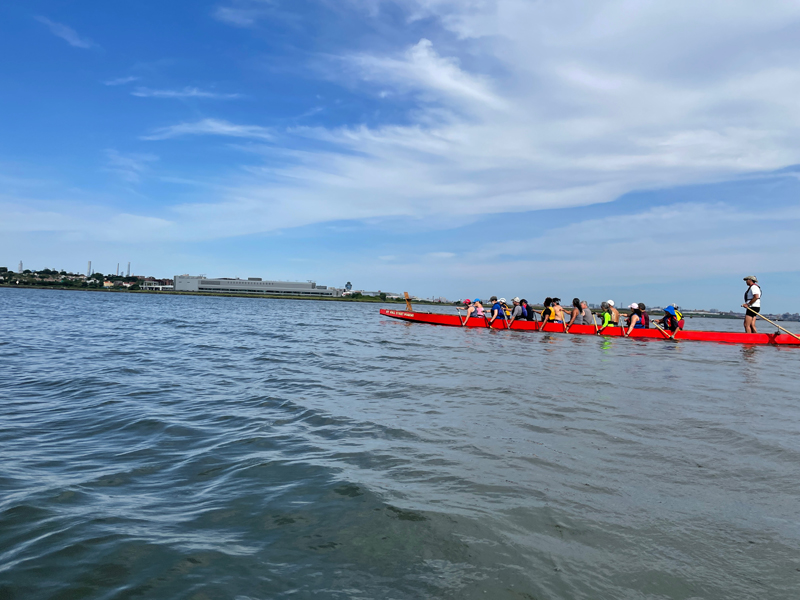
in time to see a local dragon boat crew pass on their daily exercise.

This isn’t just any sports club though, these are the Guardians of Flushing Bay, a waterfront action and advocacy campaign started in 2015 primarily by the Empire Dragon Boat Team, a group of breast cancer survivors looking for ways to clean up the water and shoreline. The Guardians have since expanded to include members from other teams, area residents, a partnership with the Riverkeeper, neighborhood associations, and local housing and labor groups.
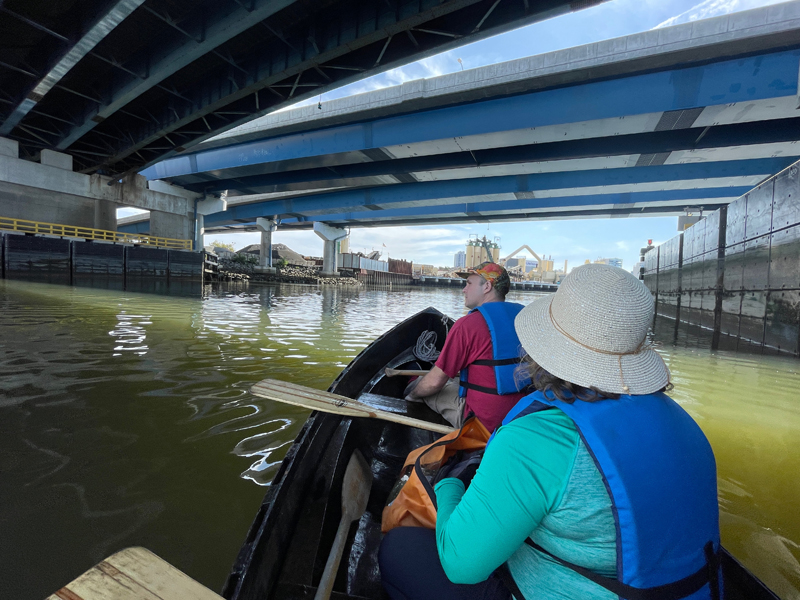
Speaking of the Guardians of Flushing Bay, we have another stop to make.

Cody Herrmann is an artist and activist, also a Guardian of Flushing Bay.
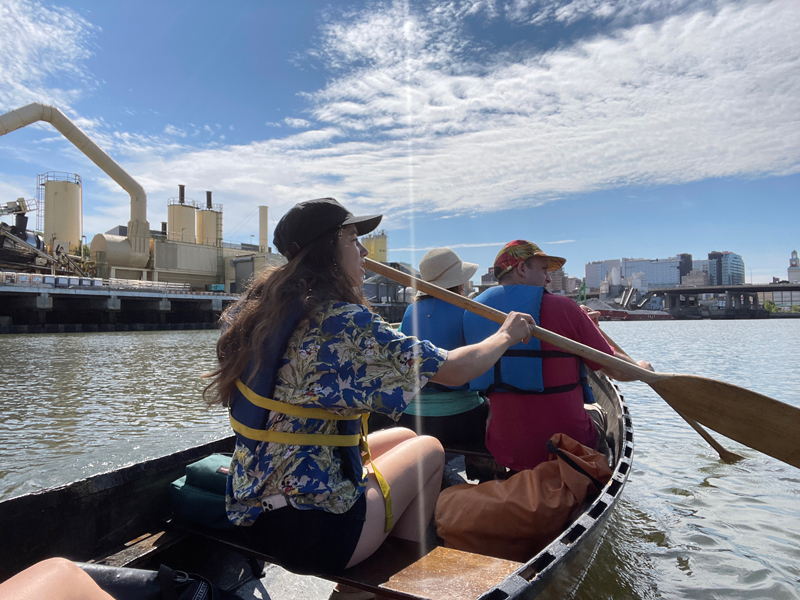
She agreed to show us around Flushing Creek, the heart and home of her artwork and political actions.
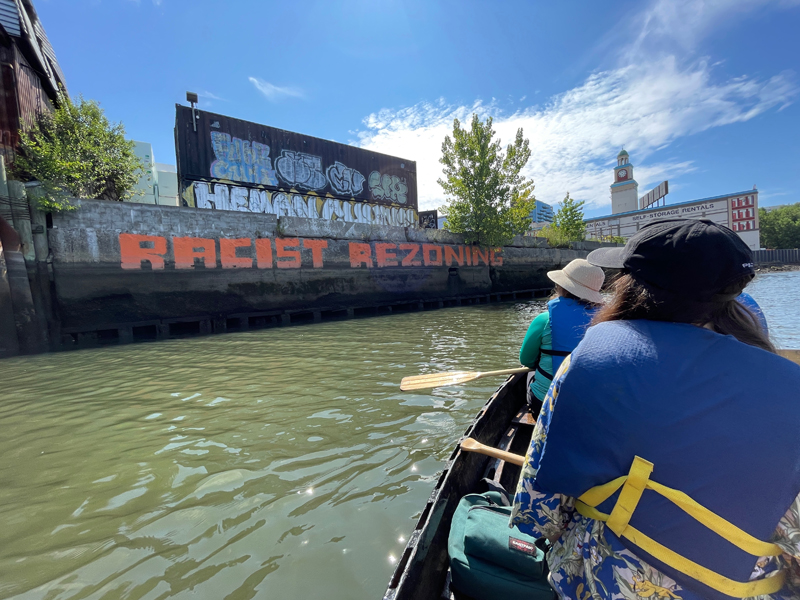
Cody told us about the plans for development along the waterfront here, a reality that her work has helped bring attention to in recent years.

The ‘Special Flushing Waterfront District’ will mean thousands of new apartments, shops, and a hotel along Flushing Creek. Although the developers promise public waterfront access, the Guardians of Flushing Bay want to make sure it doesn’t also destroy the surrounding community and creek ecology.
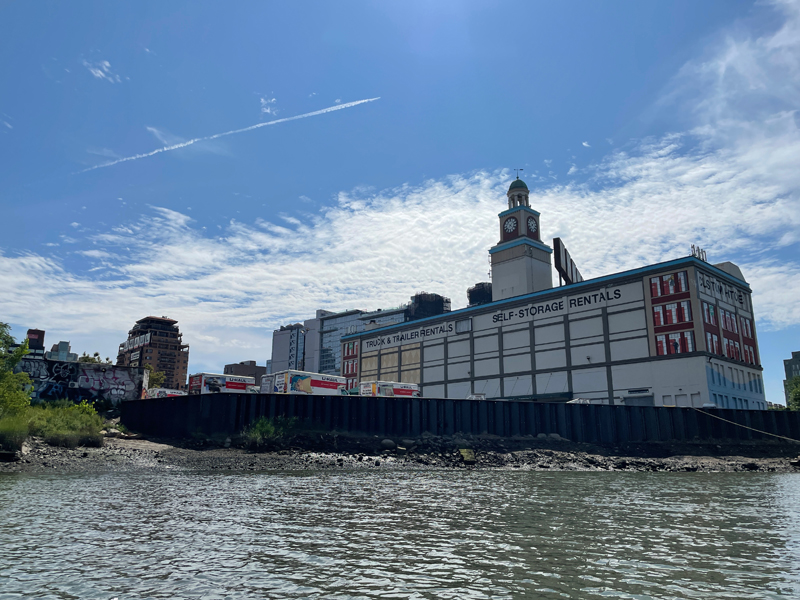
Cody showed us the place where she originally walked down to the water to take a sample as a student of Rob Buchanan’s Citizens’ Water Quality Testing Program.

That experience opened up a world to Cody that flourishes to this day, like in her ongoing project, the ’Passive Recreation Platform’,
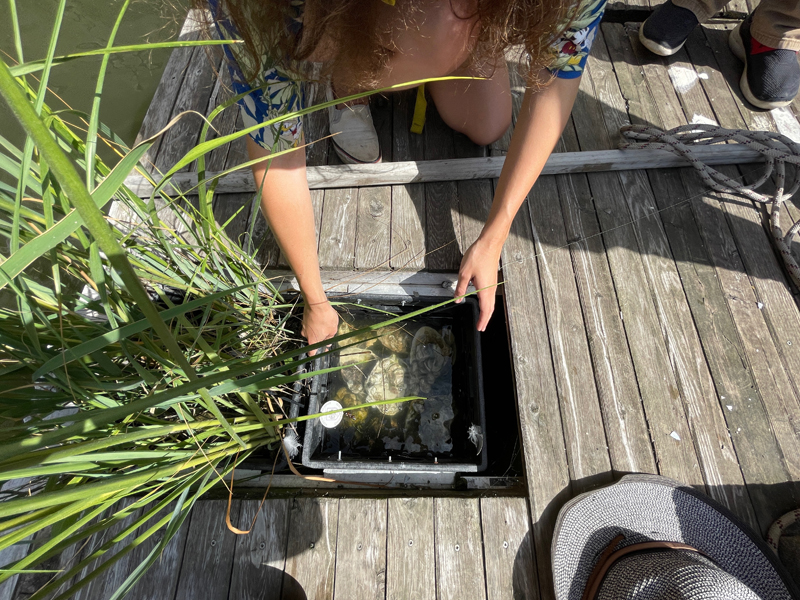
a living dock that Cody made in 2019, host to countless activities, projects, exhibitions, and picnics.

The term, ‘passive recreation’ is something that you hear in urban park planning and ecological restoration – a non-competitive, non-consumptive, low-impact use of the landscape.
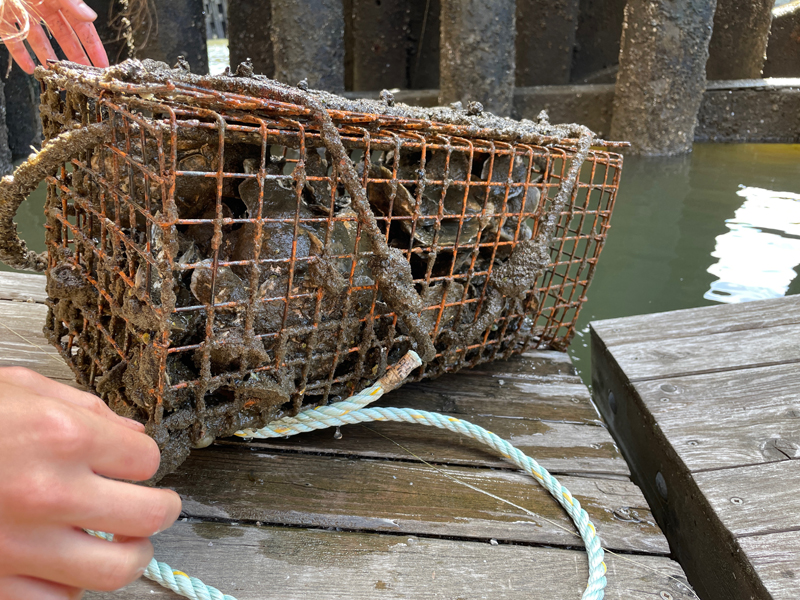
In Cody’s case, this living dock actually encourages the growth of native plants and animals. There are baskets underneath the dock for oysters but they provide habitat for all kinds of other things too,

like a crab,

who must have crawled in when he was about this size.
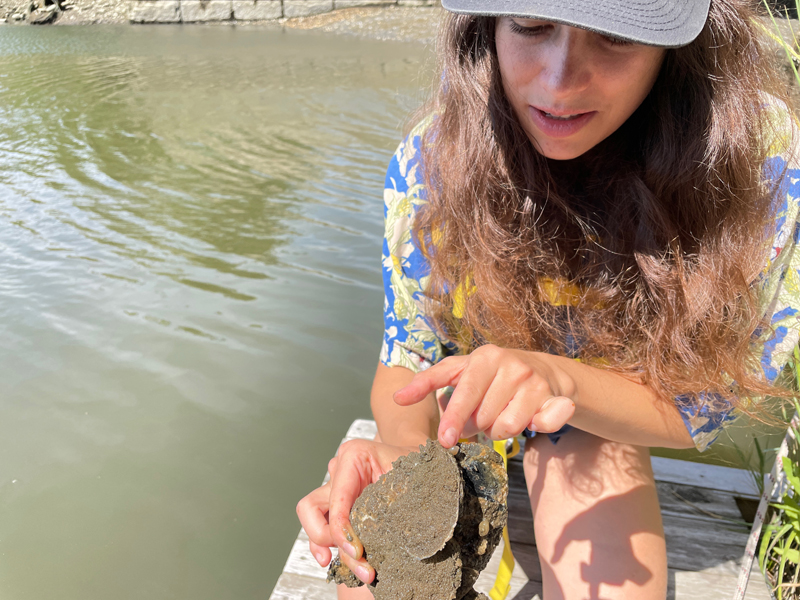
Looking up close at an oyster shell,

we saw creatures that looked like a tiny eyes.

When we submerged the shell, the eyes opened, and tiny waving arms came out.
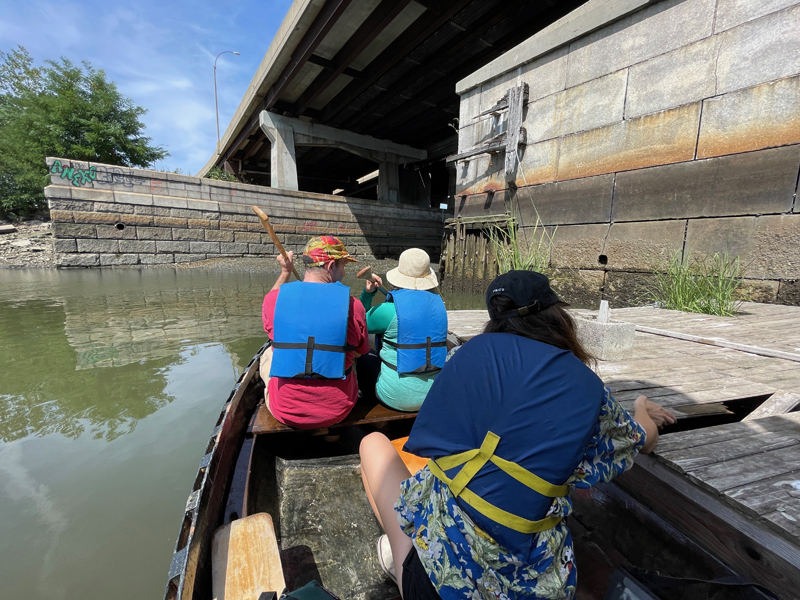
Paddling back along the pier, we realized that every structure at the waterline, and every bank was covered with the tiny eye creatures,

and below the waterline they were all open, filtering water with millions of tiny arms.

If we had not been sitting on the dock and looking at everything so closely, we never would have known about the arms,
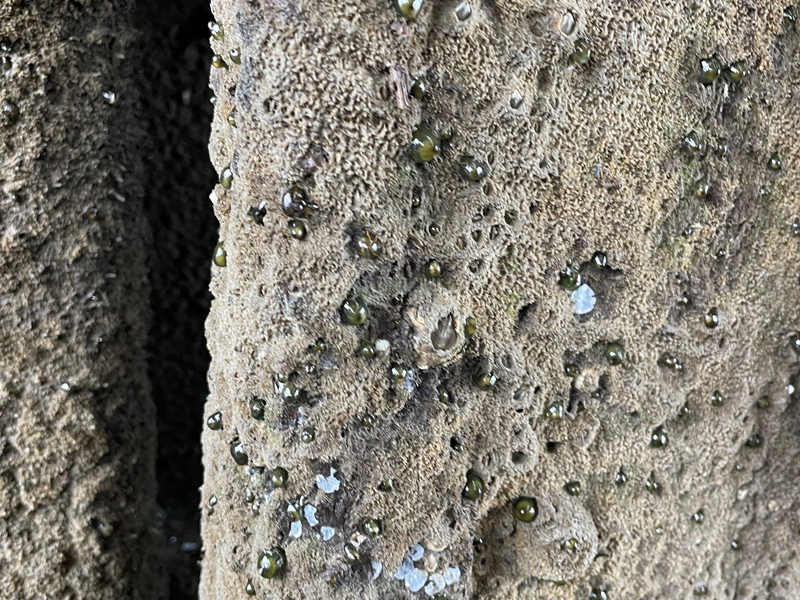
or the eyes.

That seems true for so many things, and it makes a strong argument for passive recreation.

↑ Return to Top of Page ↑